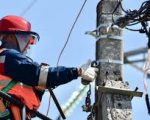Scoliosis is a spinal condition characterized by abnormal curvature of the spine, affecting millions of individuals worldwide. The effects of scoliosis often extend beyond spinal alignment, influencing posture and overall musculoskeletal health. In this article, we’ll delve into the connection between scoliosis and poor posture, the symptoms associated with these conditions, and strategies for managing scoliosis and improving posture right here.
I. Understanding Scoliosis
Understanding the nature of scoliosis is crucial for recognizing its impact on posture and overall health.
A. Definition and Types of Scoliosis
- Scoliosis is defined as a lateral curvature of the spine, which may present in various forms, including structural scoliosis (caused by vertebral abnormalities) and functional scoliosis (resulting from muscular imbalances or asymmetries). Structural scoliosis is further classified as idiopathic (of unknown cause) or secondary (resulting from other underlying conditions).
B. Causes and Risk Factors
- The exact cause of idiopathic scoliosis remains unknown, although genetic factors, abnormal spinal development, and neuromuscular conditions are believed to play a role. Secondary scoliosis may result from congenital anomalies, spinal injuries, degenerative changes, or muscle imbalances. Risk factors for scoliosis include family history, age, gender (more common in females), and certain medical conditions.
C. Impact of Scoliosis on Posture
- Scoliosis can significantly affect posture by causing asymmetry in the shoulders, hips, and ribcage. The abnormal curvature of the spine may lead to a tilting or rotation of the torso, resulting in an uneven distribution of weight and pressure on the spinal structures. Over time, untreated scoliosis can contribute to the development of poor posture and musculoskeletal dysfunction.
II. The Connection Between Scoliosis and Poor Posture
There is a complex relationship between scoliosis and poor posture, with each condition influencing the other.
A. Effects of Scoliosis on Spinal Alignment
- Scoliosis alters the normal alignment of the spine, leading to a lateral curvature that can impact posture and balance. As the spine curves sideways, it may also rotate or twist, causing the shoulders, hips, and ribcage to become uneven. These structural changes can affect the body’s ability to maintain an upright posture and may contribute to postural deviations.
B. Compensatory Changes in Posture
- In response to the spinal curvature associated with scoliosis, individuals may adopt compensatory postural changes to maintain balance and stability. These changes often involve shifting the position of the head, shoulders, and pelvis to counteract the effects of the spinal curvature. While these compensatory strategies may provide temporary relief, they can also exacerbate muscular imbalances and lead to further postural dysfunction over time.
C. Chronic Pain and Muscular Imbalance
- Poor posture resulting from scoliosis can contribute to chronic pain and discomfort, particularly in the back, neck, and shoulders. As the muscles attempt to compensate for the spinal curvature, they may become overworked and fatigued, leading to muscular imbalances and tension. Over time, these imbalances can contribute to pain, stiffness, and reduced range of motion in the affected areas.
III. Identifying Symptoms of Scoliosis and Poor Posture
Recognizing the signs and symptoms of scoliosis and poor posture is essential for early intervention and management.
A. Visual Signs and Physical Symptoms
- Visual signs of scoliosis may include uneven shoulder heights, asymmetrical ribcage, protruding shoulder blades, and a prominent curvature of the spine when bending forward (Adam’s forward bend test). Physical symptoms may include back pain, stiffness, muscle spasms, and fatigue, particularly after prolonged periods of sitting or standing.
B. Functional Limitations and Mobility Issues
- Individuals with scoliosis and poor posture may experience functional limitations and mobility issues related to their condition. These limitations may include difficulty performing activities of daily living, reduced endurance, and compromised balance and coordination. Poor posture can also affect respiratory function and cardiovascular health, leading to decreased stamina and exercise tolerance.
C. Psychological and Emotional Impact
- Scoliosis and poor posture can have a significant psychological and emotional impact on individuals, affecting self-esteem, body image, and overall quality of life. Adolescents, in particular, may experience social stigma and peer-related stress due to visible signs of spinal curvature. Addressing the emotional aspects of scoliosis and poor posture is essential for holistic treatment and rehabilitation.
IV. Strategies for Managing Scoliosis and Improving Posture
Various strategies are available for managing scoliosis and improving posture, ranging from medical interventions to lifestyle modifications.
A. Medical Interventions and Treatment Options
- Medical interventions for scoliosis may include bracing, physical therapy, and, in severe cases, surgical correction. Bracing is often recommended for adolescents with moderate scoliosis to prevent further progression of the curvature. Physical therapy focuses on strengthening and stretching exercises to improve spinal alignment and muscle balance.
B. Physical Therapy and Exercise Programs
- Physical therapy plays a crucial role in managing scoliosis and improving posture by addressing muscular imbalances and promoting core stability. Exercise programs may include stretching, strengthening, and postural correction exercises tailored to individual needs and goals. Incorporating activities such as yoga, Pilates, and aquatic therapy can also be beneficial for improving flexibility and body awareness.
C. Lifestyle Modifications and Ergonomic Adjustments
- Lifestyle modifications and ergonomic adjustments can help support spinal health and promote good posture in daily life. These modifications may include maintaining a healthy weight, avoiding prolonged sitting or standing, using ergonomic furniture and equipment, and practicing proper lifting techniques. Regular breaks and movement breaks can also help alleviate tension and fatigue associated with poor posture.
V. Importance of Early Detection and Intervention
Early detection and intervention are essential for managing scoliosis and preventing complications.
A. Screening and Diagnostic Tools
- Routine screenings for scoliosis are typically performed during adolescence, as this is when spinal curvature tends to progress most rapidly. Screening may involve physical examination, observation of spinal alignment, and, if necessary, imaging studies such as X-rays or MRI scans to confirm the diagnosis and assess the severity of the curvature.
B. Benefits of Early Treatment
- Early treatment of scoliosis offers several benefits, including slowing or halting the progression of the curvature, reducing the need for invasive interventions such as surgery, and minimizing the risk of complications such as chronic pain and disability. Implementing proactive treatment strategies can also improve overall outcomes and quality of life for individuals with scoliosis.
C. Long-Term Outlook and Prognosis
- The long-term outlook for individuals with scoliosis depends on various factors, including the severity of the curvature, age at diagnosis, and response to treatment. With appropriate management and ongoing monitoring, many individuals with scoliosis can lead active and fulfilling lives without significant limitations. However, regular follow-up care and adherence to treatment recommendations are essential for maintaining spinal health and preventing complications associated with scoliosis and poor posture.





